Winners of the 2014 Canadian National Urban Design Awards
By Bustler Editors|
Friday, Apr 25, 2014
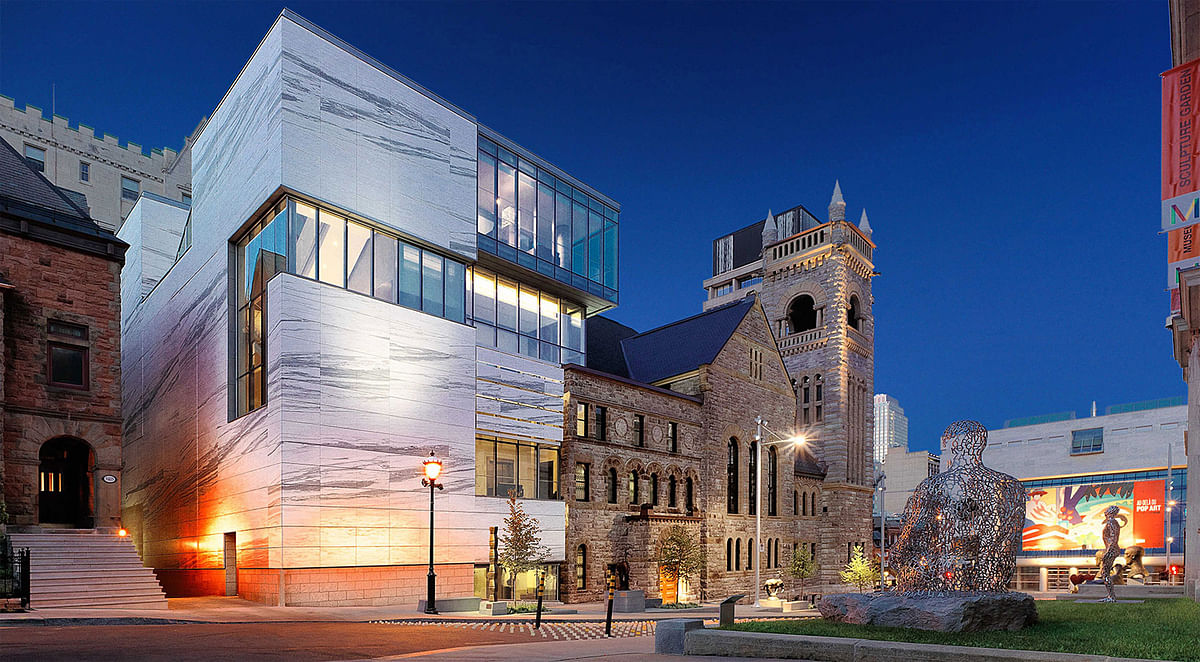
Related
Stellar sustainable design around the world always deserves recognition. The 2014 Canadian National Urban Design Awards program — hosted by RAIC | Architecture Canada, Canadian Institute of Planners, and Canadian Society of Landscape Architects — recently announced this year's winners in acknowledgment of their contributions to the quality of life and sustainability in Canada's cities through architecture and urban design.
Eight winning awards were given in the following categories: Civic Design Projects, Community Initiatives, Student Projects, Urban Architecture, Urban Design Plans, Urban Fragments, and Special Jury Awards in Sustainable Development and Small/Medium Community Urban Design.
Have a look at them right below.
URBAN ARCHITECTURE: Montreal Museum of Fine Arts - Claire & Marc Bourgie Pavilion of Quebec and Canadian Art (Montreal, QC)
By Provencher Roy
Project summary: "The conversion of the Erskine and American Church and the construction of the new Pavilion of Quebec and Canadian Art demonstrate the Museum’s commitment to contributing to the preservation of built cultural heritage while pursuing its vocation of promoting our artistic heritage, past and present. The project meets contemporary museum requirements and blends harmoniously into the existing architectural surroundings while showcasing the building’s historical connection. The endeavour’s two main construction and conservation components offer a unique opportunity to create a site with an exceptionally rich heritage and give the church renewed purpose housing the MMFA’s permanent collection of Canadian art."
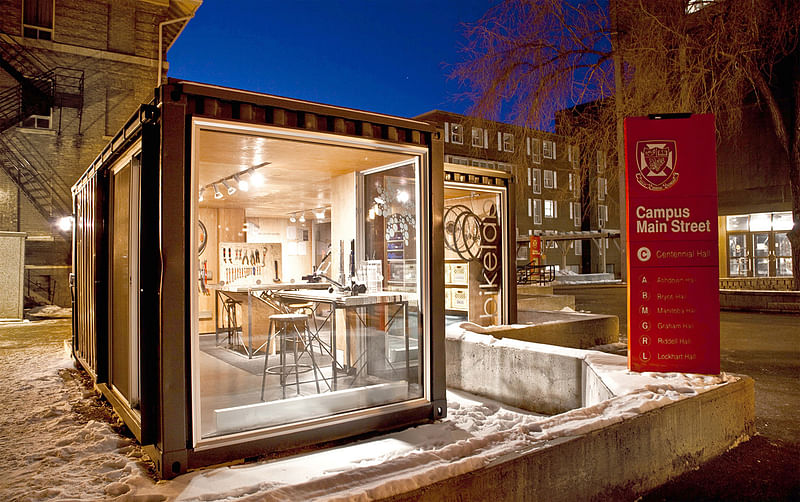
COMMUNITY INITIATIVES: University of Winnipeg Students' Association bikeLAB (Winnipeg, MB)
By Peter Sampson Architecture Studio Inc.
Project summary: "The bikeLAB was developed as one node within a new multi-modal transit initiative for the campus. With a budget of $130,000, the project makes use of a pair of obsolete shipping containers to create a workshop dedicated to all things cycling. Volunteers provide training on cycling basics, maintenance and safety. A repeatable model for which funds, materials and site can be readily available is critical to the expansion of light infrastructure. bikeLAB presents a first iteration of this model. Nearly all of the materials used were recycled and the energy required for operation is provided by solar collectors and surrounding buildings."

CIVIC DESIGN PROJECTS: Westminster Pier Park (New Westminster, BC)
By PWL Partnership Landscape Architects Inc
Project summary: "The park is the first phase in the city’s long-term vision to integrate the waterfront with the historic downtown core, and to reconnect people to the previously industrialized Fraser River. Formerly an industrial brownfield, the 3.84-hectare park opened in 2012 at a total cost of $23 million. Contaminated soil was removed. A new pier replaced an old pier in disrepair. There are children's play areas, a festival lawn, plaza, sports courts and waterfront promenade. The shoreline is planted with native species beneficial to fish and wildlife and provides a food source for salmon on their way upstream during spawning seasons."
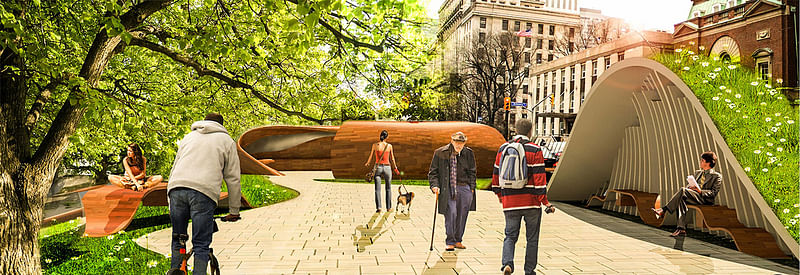
STUDENT PROJECTS: Collaborative Exercise 2013: An Architecture of Civility (Toronto, ON)
By Ryerson University, Department of Architectural Science, George T. Kapelos, FRAIC, MCIP, Coordinator.
Project summary: "The exercise challenged students to design civic amenities for Toronto’s public spaces that would encourage civility and inclusiveness, regardless of a citizen’s means or ability. It demonstrated the importance of diversity, equity and inclusion in architectural education and professional practice. Design teams, consisting of 12 to 15 students from all years of the program, acted as ‘citizen architects’ at specified sites. Graduate students acted as ‘community voices’ pushing for the rights of citizens, including the elderly, pedestrians, cyclists and taxpayers. Among the projects were bike paths, a civic exchange, discovery information hub, and speaker’s corner for political activism and community engagement."
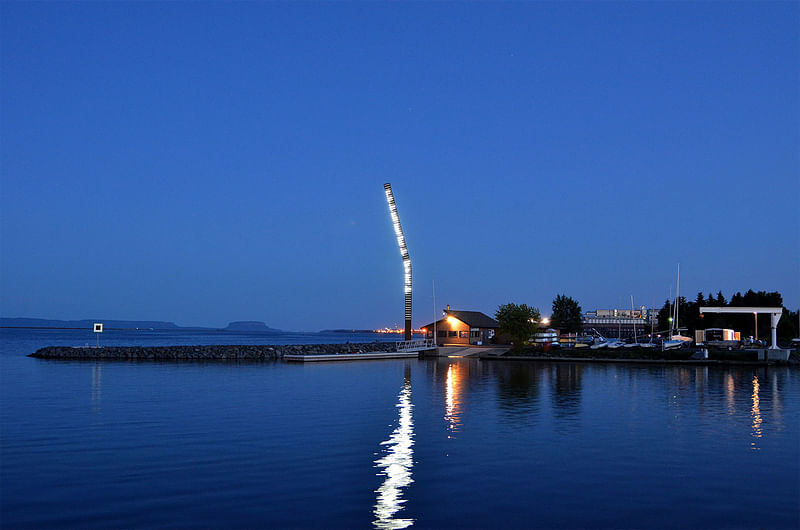
URBAN FRAGMENTS: Jiigew [By the Water] (Thunder Bay, ON)
By Brook McIlroy Architects / SPMB
Project summary: "Located on the ends of Piers 1 and 3 on the Thunder Bay Waterfront, Jiigew [By the Water] forms a pair of sculptures 70-feet high. They act as beacons overlooking Lake Superior at the water gateway to the city. Through its shape, proportions and luminous qualities, Jiigew celebrates the history and identity of Thunder Bay by evoking shipbuilding, lightning and thunder. Each of the beacons relays a poem-story using an array of lights in Morse Code. An audio track is heard as a whisper reciting the poem in both Annishinabe and English. The choice of weathering steel for the structure refers to shipbuilding."

URBAN DESIGN PLANS: Blatchford Redevelopment Masterplan (Edmonton, AB)
By Perkins+Will Canada
Project summary: "Winner of an international design competition, the plan repairs a 215-hectare rift in the city's urban fabric. The team pursued the idea of 'connectedness' with a focus on sustainable urban living. The plan delivers a community for 30,000 residents that includes an energy strategy to take the development beyond carbon neutral. The plan sets a new mixed-use community in the context of a challenging environment. The City Centre Airport lands form a large void in the heart of the city. Surrounded by light- industrial and commercial uses, the site is further separated from residential neighbours by arterial roads, the Yellowhead Highway and a railway."
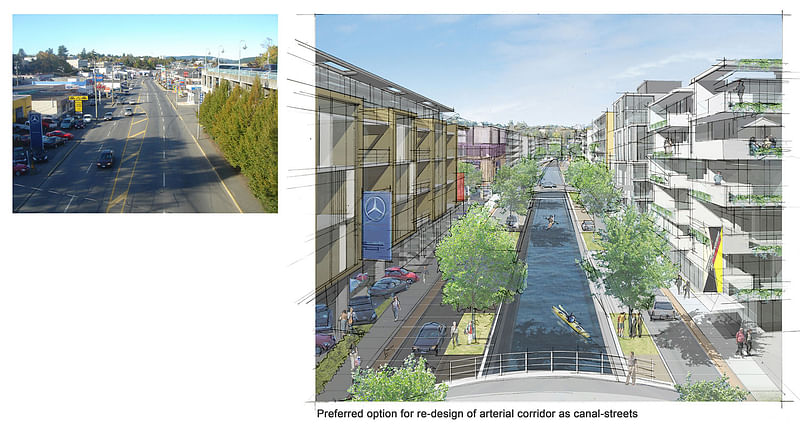
SPECIAL JURY AWARD - SMALL/MEDIUM COMMUNITY URBAN DESIGN AWARD: City of Nanaimo Downtown Urban Design Manual and Guidelines (Nanaimo, BC)
By D'Ambrosio Architecture + Urbanism
Project summary: "The economy and vitality of Nanaimo’s downtown core have been eroded by decades of growth in suburban malls and sprawling residential development. The plan is part of effort to revitalize the downtown core and emerges from a desire to preserve the downtown's historic buildings. It aims to guide development of a human-scaled pedestrian centre that can accommodate a mix of cultural and commercial uses, along with new residential development in a contemporary idiom. The new guidelines are meant to inspire owners of undeveloped or underdeveloped sites and to assist municipal planners in directing landowners and developers toward a coherent and vital urban form."

SPECIAL JURY AWARD - SUSTAINABLE DEVELOPMENT: Evergreen Brick Works (Toronto, ON)
By DTAH Architects Ltd.
Project summary: "The mission of Evergreen was to transform a deteriorating industrial site in Toronto’s Don Valley into an environmentally- themed community landmark. A multi-disciplinary team of designers had a mandate to preserve the past and implement sustainable design. The one new building, The Centre for Green Cities, is a LEED Platinum candidate. Heritage preservation, site remediation and defining the landscape all played a significant role. The adaptive reuse of the existing buildings, interconnected by bridges and walkways, formed the basis of the revitalization. Evergreen has become a popular destination for events such as a weekly farmers’ market, children’s programming and conferences."

Share
0 Comments
Comment as :